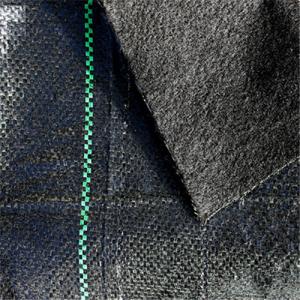Many people are interested in geotextile fabric, a versatile material used in different civil engineering and environmental projects. The debate on woven and nonwoven geotextile fabrics is ongoing with each having advantages and disadvantages. For this reason, this article will explore the intricacies of both woven and non-woven geotextile fabrics as well as delve into their suitability for different applications.
Wonders of Woven Geotextile Fabric
A stable, strong structure is formed when two sets of yarns or fibers are interlaced at right angles to each other to produce a woven geotextile fabric. This construction method gives woven geotextiles high tensile strength hence they are ideal for use in places where durability and tensility are crucial. These materials have been widely adopted for their robustness; from soil structures reinforcement to road support and embankments.
One notable attribute of woven geo-textiles fabrics is its resistance to tear and wear. Over time, the weaving action makes sure that it never fades off giving long lasting solution for projects. Moreover, it has better filtration properties due to its weaving which also allows its application on water management programs such as soil stabilization.
The Appeal of Nonwoven Geotextile Fabric
Conversely, non-woven geotextiles are manufactured by bonding fibers together either mechanically, thermally or chemically. As a result, they become light weight, flexible with high permeability rates.They are mostly preferred because they can be installed easily without much cost being incurred.
Nonwoven geotextile fabric’s flexibility makes them very suitable where the terrain is not even or if the project requires a fabric that can go along with the shape/contour of land/ground surface perfectly. They also have high permeability levels enabling water flow through them which make them relevant in water management systems projects.
Comparing Woven and Nonwoven Geotextile Fabrics
For woven and non-woven geotextiles, we should consider the requirements of a project carefully. Woven fabrics are stronger and last longer, while non-woven ones are more flexible and cheaper. Depending on these factors, one can choose between the two.
Applications of Geotextile Fabric Woven and Nonwoven
Woven or non-woven geotextiles find application in many different fields. These fabrics are widely used in construction sites as well as environmental projects for enhancing stability and performance of different structures around. Some common applications include:
Soil reinforcement and stabilization
Erosion control and sedimentation prevention
Road and railway construction
Water management systems
Landfill liners and covers
The Future of Geotextile Fabric Woven and Nonwoven
In response to advancements in technology, the manufacturing process is also changing for geotextile fabric. These advances in materials science have led to new types of improved geotextiles. In both woven or nonwovens, the future looks bright for geotextile fabrics as they can be applied in emerging fields such as green infrastructure development that is ecofriendly or sustainable development.
Conclusion
In conclusion, the decision between woven or nonwoven geotextile fabric is not a simple one. These different types each have their unique features and roles which suit them to different projects. In this article, it was established that while woven geotextile fabrics offer strength and durability, non-woven geotextile fabrics provide flexibility and cost effectiveness. The choice must consider the specific requirements of the project being undertaken, as well as the anticipated outcome. More progressions in this field will certainly be seen in future due to its dynamic nature.







